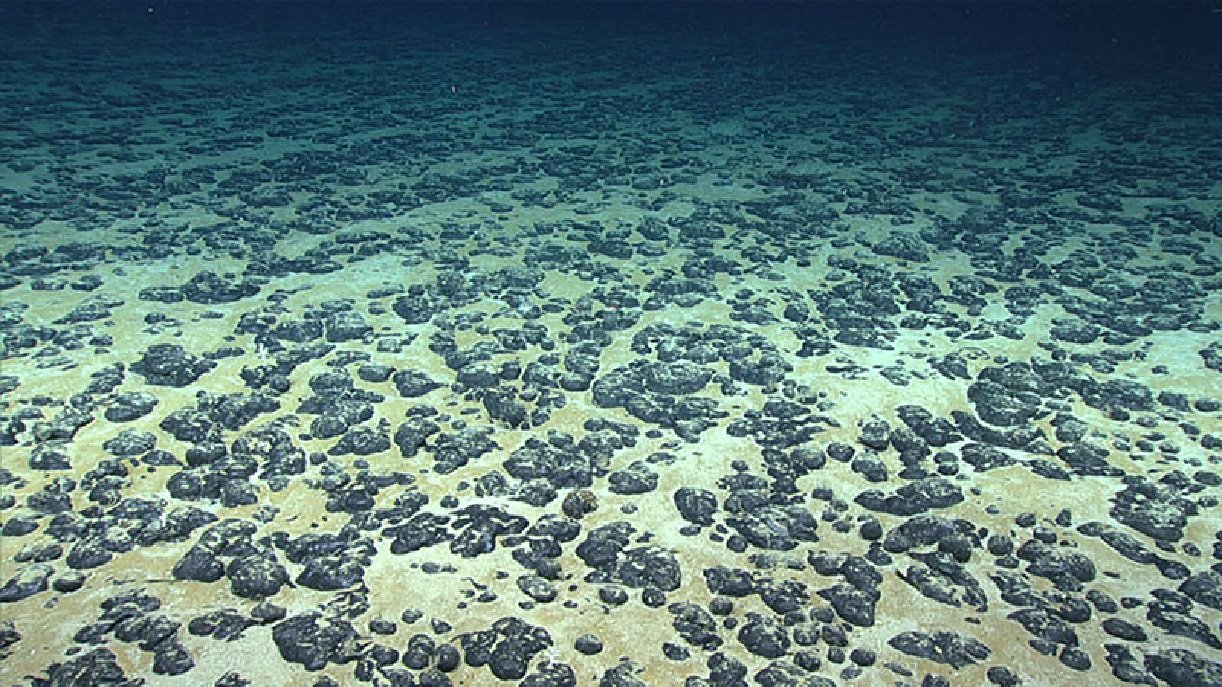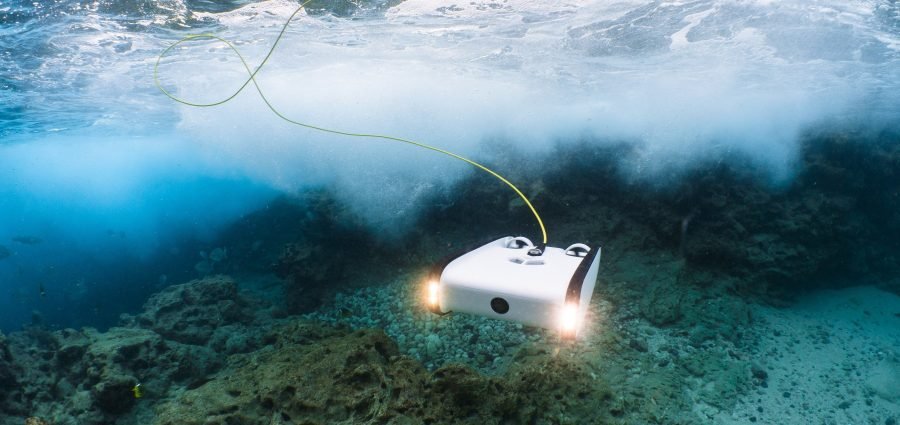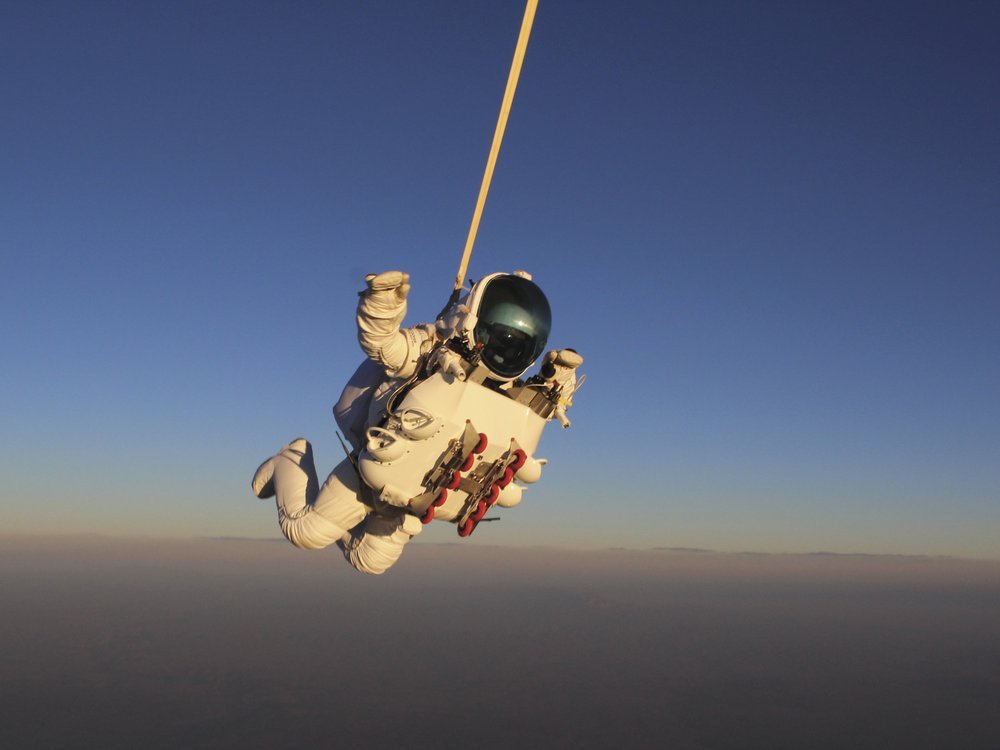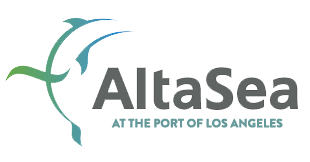
CHANGING CONDITIONS
&
ARISING OPPORTUNITIES
2022

Treasure is a funny thing. Should we value it by what we discover or what we lose?
-- Peter Benchley
Dear Friends,
Pole-to-Pole Conservation made positive impacts in 2021 on the people, the environment, formed new partnerships, and enlarged our understanding of how nature and human civilization can work together in sustainable and restorative ways. Over the past years, key goals were achieved in our Indigenous Climate Adaptation Scholarship Program, our coral restoration programs and some exceptional opportunities arose in science and media we are embracing. We find working most effectively is a combination of having certainty in your direction and goals, while also allowing flexibility to changing conditions and arising opportunities.
Every year we stop and consider what we have accomplished and what we're planning for the future. We are proud to share this brief overview of our work with you first, our partners, supporters, and friends. Next, we will distribute this information more broadly. By design, we are a small close-knit organization and you are part of that family.
Without you, we wouldn't be able to do what we do. There has never been a more important time for the world to work collectively on radically adjusting the impact of our civilization and our use of Earth's resources than now. Thank you for your friendship, generosity, and being part of Pole-to-Pole Conservation in achieving these aims.
Our mission at Pole-to-Pole Conservation is to find ways for people and the ocean to co-exist and support each other in the modern world. At present we are hyper-focused on the abrupt climate change we are currently causing and suffering from. We are in peril and if we don't wake up now and take global actions together as one earth society, civilization as we know it will not exist within several hundred years.
The persistent existential problems we face are uniquely hard to solve because one of their main root drivers is the chronic economic/geopolitical North/South divide on our planet. The global north demands products, services, and commodities that are provided by poor nations that have few economic alternatives. Another amoral dimension to this structure is developed countries often place destructive, dangerous, and dirty industries and practices necessary for their lifestyles in poor nations who do it because they need economic output, but lack the policies, capacity, and framework to properly manage the environmental and human negative impacts, which can be immense.
At the end of the day we must narrow the vast difference in the quality of life between the have and have nots and this starts with increasing the understanding between these two worlds. For example, while half the world frets over which new iPhone to buy, the other half can't afford a bicycle to take their goods to market, their kids to school, and themselves to places where they can receive health care.
The inequities in education and business opportunity paves the way for "offshoring" the dark side of industries to developing counties enabling slave-like conditions for workers in one country to make life easy in another.
Humanity has had a slave economy since the ancient world. Today, it takes form in poor countries doing work for little money and living with inadequate health care, housing and education while the beneficiaries are in wealthy countries. There is an astonishing irony that wealthy countries that depend on products and services from developing countries to support their first-world lifestyles.
How can wealthy countries make moral arguments to poor countries to conserve nature even at the cost of economic opportunity, because the wealthy nations either destroyed their regions of wilderness and biodiversity in their development or they choose not to avoid unsightly aftermath?
Today we have an unprecedented demand (600-1000% increase) for metals, almost like we thirsted for oil in previous centuries, but this time it is for wind turbines, electric car and truck batteries, computers, computer servers, phones, and in the future we will be using massive batterie on ships and outside large cities. This is what a renewable energy future looks like and we must do it. Little do people who live in California or Brussels know what it's like to live near giant open-pit battery metal mines, which makes it so easy to sit comfortably behind a desk at a first-world university and criticize extractive industries elsewhere in the world.
Human population growth demands unsustainable use of materials and energy and is a recipe for disaster. It pushes us too far and takes too much from an already overwrought earth/atmospheric/oceanic system that is the life support of the earth. There is a science that shows you can stress a system for only so long until it snaps like a rubber band and enters into a new state of homeostasis. They are called tipping points and once you cross one it is really hard to get back on the other side. We may find ourselves stuck on the bad side of a tipping point looking longingly to where we once were and where we can never return. The Ocean Health index discusses this (www.oceanhealthindex.org) as does the latest book by Pole-to-Pole co-founder Greg Stone (SOUL OF THE SEA: IN THE AGE OF THE ALGORITHM).
The renowned Stockholm center for resilience calls them "planetary boundaries" and they think we have already crossed four out of nine.
Analysis of Earth systems by the Stockholm Center for Resilience. Graphic by J. Lokrantz/Azote based on Steffen et al. (2015).
In short, we have run out or will soon run out of everything well before the entire world has enjoyed the good quality of life experienced in developed nations. To many people, the industrial revolution is a single historical event that happened a couple of centuries ago. To the 2 billion people who today still have no reliable electricity or clean water and health care, it's something that happened entirely to other people, not them.
2021 Nobel Prize-winning chemist said it well when he noted we are not just having shortages here and there, we are running out of everything. We need more materials to follow the last century of radical uptake and use of materials. "We need more atoms and molecules of everything," he said. This of course must lead us to a closed-loop material economy as soon as possible.
For millions of years, there were so few people that our environmental impacts were local and short-term and did not cause planetary-wide impacts. We wasted almost everything and the term "dilution is the solution" was true for a great many years after hominids arrived on the scene 6 million years ago. Things changed with the Agricultural Revolution. The Agricultural Revolution began when we domesticated animals and plants, which in turn provided us with stable living conditions, communities that stored and shared food. For the first time, we had "free time" from the all-consuming task of catching and gathering food to just stay alive. We did not use all this new free time wisely. We developed a multiplex of abilities and technologies that enabled us to turn just about whatever we touched into whatever we wanted regardless of the environmental cost, while all other animals were stuck in that full-time job of just feeding themselves.
As our civilization grew, humanity used various materials from the earth. It took some two hundred thousand years for our species to migrate to all parts of the planet and first reach a population of one billion by 1800. Then we added another 6 or 7 billion people in only the next 200 years. The growth of our population came at the cost of many unintended consequences including climate change, pollution, destabilized ecosystems, biodiversity loss, material scarcity, and more.
For a very long time, our humanity’s agricultural and hunting practices only needed natural rocks, wood, shells, and other materials found easily in the environment during the early stages of our evolution. However, several thousand years ago we began using and refining special elements found in the shallow parts of the earth's crust, which led us from the Stone age to the Bronze and Iron ages.
Then rapid advancement in science and our discovery and use of high energy fuels like coal, oil, and nuclear triggered what has been called the Industrial Revolution. It is no coincidence that the first Industrial Revolution started 200-300 years ago, the same time our population began exploding.
Science evolved rapidly and we became aware that we live in a closed system with finite resources on a planet traveling 67,000 miles per hour through a vacuum of space around the sun with no chance of resupply.
Every year a day is designated as "earth overshoot" day, the day in the year when we have used resources at a level that is sustainable over the long term. Every day after that is taking vital resources from our decedents. In 2020 it was August 22. In 2021 it was July 29, a trend line leading to a collapse in supply. It means we currently need 1.5 earths, or around 18 months of Earth's operating budget for freshwater, food, and so on to meet our demands each year at our current consumption level and way of operating, ratios likely to keep getting worse.
It is a certainty that if we do not change our behavior the earth will soon be a very uncomfortable place for humans, possibly a place we can no longer live.
All of society needs to be part of the solution and change course, but here we focus on the Non-Governmental Organizations, the area where Pole-to-Pole Conservation exists.
We need a radical restructuring of the nonprofit environmental sector from big and centralized to small, diverse, integrated, and flexible. These new NGO agents of change, in our increasingly complex and technological world, are and will continue to devolve from Big International Non-Profit Organizations (BINGOs) headquartered mostly in the global north to smaller more strategic organizations hybridized with businesses and other societal structures sensitive to local conditions and needs. Most importantly, not imposing first-world agendas on the developing world, rather prioritizing local needs.
We applaud the catalytic role BINGOs played in the latter half of the 20th century when they awoke civilization to the consequences of rapid industrialization and population growth, and that everything we have had or ever will have has been on earth from the beginning.
In the later part of the 20th-century civil society rose up and formed organizations to address this as did governments. Businesses adopted and are still developing sustainable practices to deliver goods and services, nations have convened and adopted numerous treaties that provide consensus approved ways of how we can do things better now that we finally occupied every continent and have touched and used almost every resource.
While the problems are huge and planetary, the solutions are more granular and more efficiently carried out by right-sized purpose-built institutions integrated into society and eventually blended seamlessly. These organizations are small, interlinked, and recognize moral, financial, and ethical equity across all regions of the globe.
Pole-to-Pole Conservation is one such organization, our staff has come from BINGOs, businesses, the Arts, businesses and often volunteer or work part-time. We do not pay large executive salaries and execute work through time-limited contracts.
We focus and create programs for areas of the planet we know best, the Pacific Islands while keeping the global view in mind. We develop and test solutions that can scale.
One of the co-founders was born on an indigenous remote south pacific atoll with a blue lagoon whose beauty was once described by noted author and former president of UN General Assembly as "inescapable." While growing up in this remote and soon to be part of the beleaguered post-colonial wave sweeping through the region, she left at the age of 12, was drawn into the international world of advertising. This gave her an unprecedented first-hand experience of society's values from the small atoll she was born to the major cities of the world where industry thrived and as far from the values and world she grew up in. By the age of 21, she settled on the west coast of the United States along the rim of her beloved Pacific Ocean to become a designer and agent of social change ranging from successfully lobbying the California public school system to conduct cancer screening to creating marine protected areas in the Pacific Islands. Diversity is at the core of all we do. Other team members are actors, artists, chiropractors, nurses, musicians, and former college presidents. We need all sectors of society to understand and work together to overcome our global problems.
The details of the problems we face as a civilization are well known to all of you, so we don't focus on that here but can provide more details upon request. Two board members were co-founders of the ocean health index and one the architect of the world's first large Marine protected area.
Origins of Pole to Pole Conservation.
Our combined decades of experience pushed us all to a "New Realism" about solving environmental problems. It is not about saying no to everything. It's about making it work with what you have. Everyone must be taken into consideration. The typical idea that biodiversity must be protected at all costs was unrealistic dreams that originated in cocktail parties of conservationists in the global north with no understanding that for billions of people biodiversity was their daily source of food.
Co-founder and trustee Greg Stone spent most of his career underwater. He had a front-row seat to the modern environmental movement, the issues that inspired it, and was part of the birth of marine conservation in the early 1990s. His early jobs were in science and included a position with top-secret clearance under the National Undersea Research Program whose mission was to put scientists underwater with every conceivable technology (think NASA of the oceans), spent three years flying aerial surveys from Nova Scotia to Mexico for the US government so they could plan offshore drilling. By the time he was 25, he had logged thousands of hours under and over the water and Greg noticed that things were wrong, terribly wrong, in the ocean.
It started on a spring day in 1990 18,000 feet underwater in the Sea of Japan where he was diving in the world's deepest submarine at the time, the Shinkai 6500.
He was exploring the seafloor life around an epicenter of an earthquake. After the long three-hour descent his submarine gently landed on the abyssal plain. He was shocked to find the seafloor covered in trash. This was a place that had not seen the light of day for billions of years and no humans had ever been near it. The lifestyle we had developed on the surface was spilling over and polluting our ocean down to the deepest remote regions.
There is a consequence to knowing something. If something is wrong and you can improve it, you must. So Greg's career veered off into the new world of marine conservation that had just been summoned into existence in the late 1980s when the NW Atlantic Cod fishery unexpectedly collapsed from overfishing. Bringing with him his deep sea and marine technological skills he founded the nation's first marine conservation program at The New England Aquarium, led expeditions for National Geographic, worked on UN treaties to protect the ocean as well as working with captains of industry at Davos, The World Economic Forum. Finally, he was recruited to lead the science and marine programs at one of the most prestigious BINGOs Conservation International.
While persistently developing international conservation policies, he expanded his research globally through a series of expeditions focused on understanding the problems impacting ocean health and documenting them through both popular media and over 70 scientific publications. He created solutions that could scale globally, always keeping a planetary view in mind.
During the search for the lost Malaysian Airliner, Greg became a regular on the news programs and was introduced at the "swashbuckling Indiana Jones of the Sea" by CNN Michael Smerconish for his many challenging undersea expeditions.
He spent the first 30 years of his career documenting the problems in the ocean, developing tools to restore it, helping hand-craft several international UN treaties to protect the ocean, held executive leadership roles at Conservation International, World Economic Forum's Ocean Council at Davos, was the science advisor for the United Nations Oceans Envoy, but he could not find a role with the hands-on direct impact connected with countries in all stages of development he needed to deal with an exponentially increasing complex world.
Pole-to-Pole Conservation also engages with the private sector, who are the ones responsible for extracting things we all want from the ocean and disposing of the things we don't into it. All the disastrous issues you read about in the news are done by businesses we all rely on. They are not bad guys, they are doing what we ask them to do and they make mistakes, but want to be part of the solution, they just need guidance. We do that.
Pole-to-Pole uses the multiple connections our team has and understanding of people, especially in the developing world, to implement scholarships and projects that will get right to the heart of an issue without a big administrative organization in the way.
P2P aligns with the Metals Company who seeks to responsibly collect loose lying fist-sized rocks on the seafloor to responsibly obtain the 600-1000% more metal needed for renewable energy systems, electric cars.
Since terrestrial mining is the worst single industry on the planet in terms of causing environmental harm, P2P is working to disrupt that paradigm and begin sourcing base metals from loose lying Polymetallic nodules lying on seafloor far out to sea in international waters. These metals are needed for renewable energy transformation. There is a simple and clean solution to supplying these metals because it is much lighter on the environment and moves us towards sustainable closed-loop recycling so that we never get into the nightmare of burning a resource over and over again to the destruction of the climate.
While sounding counterintuitive, gathering these rocks from a small part of the seafloor is far less damaging to the Earth system than terrestrial mining and will begin the restoration of a balanced planetary ecosystem.
Collecting loose lying fist-sized Polymetallic Nodules, like these shown here on the seabed is less destructive to the planetary ecosystem than terrestrial mining. An area in international waters that is less than 1% of the global seafloor has enough Nickel, Cobalt, Manganese, and copper to provide for a renewable energy infrastructure with zero tailings.
Change happens by empowering developing countries and guiding business operations. We no longer need BINGOs, they served a critical role in transition and awareness, but they became expensive to operate and more concerned with raising funds for their first world executive salaries and their other operating expenses than the problems in developing countries, the true battlefront of conservation. One foreign minister from a developing country said, "big foreign organizations make a market out of our misery."
Conditions that made Earth a perfect place for our species to prosper are disintegrating fast. The world is not coming to an end, it will go on and on, but an earth with conditions favorably for our well-being is in peril.
All of this makes people feel overwhelmed, but we cannot let that happen. As long as everyone does something at whatever scale we will solve this planetary calculus and persist. Everyone must be part of the solution and we invite you to work with us.
Our cornerstone programs include the Indigenous Climate Adaptation Scholarship and cultivating Heat Resistant Corals that may provide animals that can replace corals unable to cope with rising temperatures.
Pole to Pole co founder Christine Zinnemann with partners Pete Rive and an ECONOMIST film crew on expedition to Phoenix Islands to study heat resistant "Super Corals."
Dr. Greg Stone placing temperature monitors at the Phoenix Islands
From 20 years of research, we found a natural group of corals that evolved to withstand heat fluctuations from being repeatedly exposed to the oscillations of El Nino for millennia. We believe that the long sought after genetically modified heat resistant coral was done for us by nature and if these corals can survive transplanting to distant locations they may provide a basis for a future where shallow-water coral is present. Coral provides the substrate for all the animals that live in a coral reef and many hundreds of millions of people in developing countries depend on reefs for food, businesses, and protection from storms.
We also believe providing tertiary education to students from developing countries is the best long-term strategy for ensuring there is local capacity to deal with navigating through this changing world. We chose undergraduate scholarships because we noticed the tendency of graduate students from developing countries to stay in the developed country they received their degree, but undergraduates want to go home after four years. We also focus on providing opportunities for our graduates to stay home and use their knowledge and skills in the country they were born in.
We also produce media for the communication of our programs and educating the world on our state of affairs.
Finally, we also conduct research and interventions on an as-needed basis. We recently led an expedition to the Galapagos Islands inspecting the region for climate change. This past year we also collaborated with a major European shipping company to find ways for the private shipping sector, by far the dominant presence on the world ocean, to collect information opportunistically in the course of their normal business routes adding another tool in the quest for a climate solution.
Between the trusses and conservation fellows, P2P has decades of seasoned in-depth experience to draw on and we are motivated by the urgency to correct how badly and inequitably humanity is using natural resources and living on planet earth. We are small by design because our impact is through leveraging larger entities and creating models that can scale.
The following pages will give you an idea of what we have done with your support, friendship and partnership.
Where does this all lead to? A world with basic internet access, education, and health care parity for every person born on Earth and to enable rational climate policy and mastery of recycling so that everything is used over and over again. That is a world one can look forward to.
Thank you,
Pole-To-Pole Conservation Team
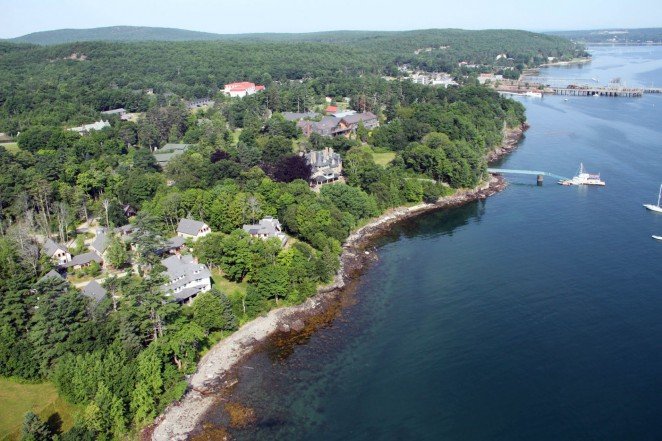
Pole-to-Pole is excited with the opportunity to launch the Barbara Bosson Initiative that will help support our Coral Restoration Program and our Indigenous Climate Adaptation Scholarship Program. These two pillars of the Initiative will forever stand as an expression of Barbara's passion and interest in the world and its people and their relationship with nature.
Pole to Pole Conservation is pleased to announce the Mary Schein Initiative that was instrumental in launching P2P and specifically supports our inaugural Coral Restoration Program (2022) as well as our Indigenous Climate Adaptation Scholarship Program. Mary shared our belief in a world where everyone lives happy, healthy, productive and creative lives. Her Initiative supports our work on the ocean because it covers most of the planet and is the major life support system for everyone on earth . We are honored to share our mission to apply practical solutions to the problems facing our oceans so that people of all socio-economic classes can thrive
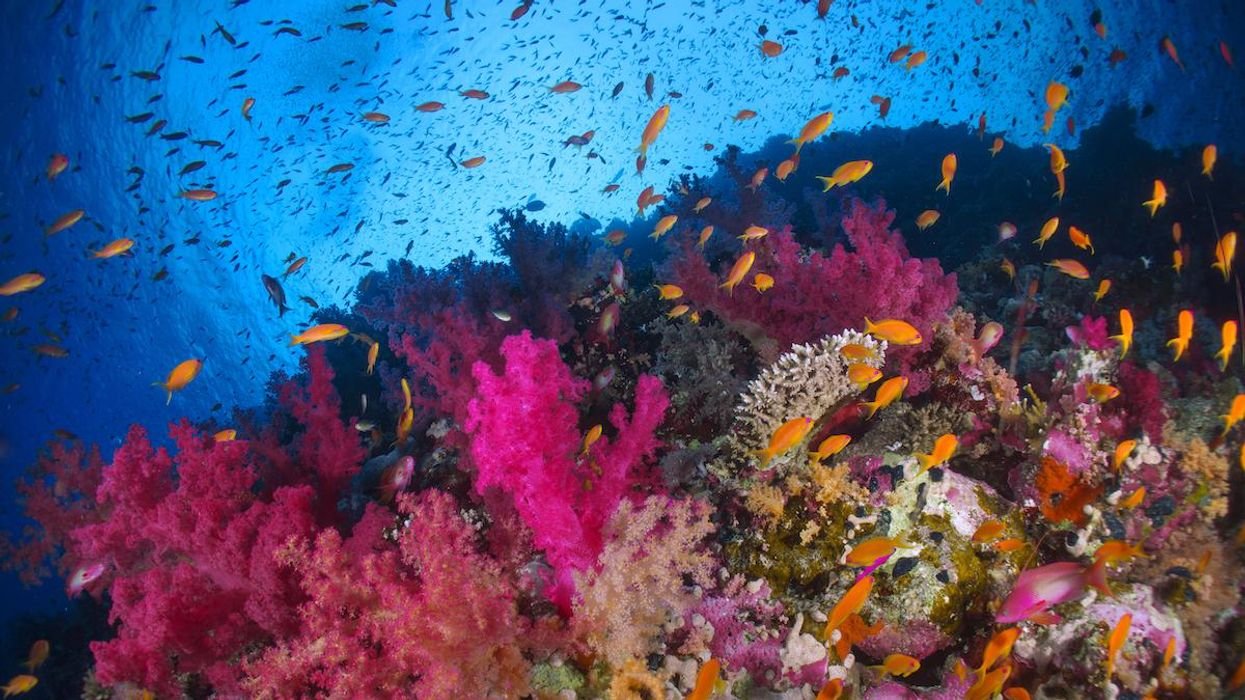
Coral Restoration
Establish Coral Nurseries For Conservation and Socioeconomic Development In A Least Developed Country Under Extreme Threat of Climate Change
Establish Coral Nurseries For Conservation and Socioeconomic Development In A Least Developed Country Under Extreme Threat of Climate Change
Pole-to-Pole is on the leading edge of the conservation and restoration of coral reefs, the primary habitat that hundreds of millions of people on earth depend on each day for their sustenance. The Trott Family Foundation will help support P2P’s efforts with creating nurseries to cultivate and grow coral seedlings from the region to a chosen sight on Tarawa.
The Baum Foundation places great importance on working closely with other organizations toward common goals. By establishing and maintaining effective partnerships with other groups, The Baum Foundation is able to create mutually beneficial relationships that maximize the use of resources and increase the impact of the programs we support.
Pole-to-Pole would like to acknowledge The Baum Foundation as Founding Donors and the support they provided in 2021.
P2P’s philosophies are aligned with the Baum Foundation and we appreciate their support and the working relationship with Glenn and April. Thank you for your support. The Baum Foundation works across most of our programs and also advises.

Thank You
Today we possess the scientific ingenuity and technical expertise to restore fisheries, a major source of the world’s food supply, and to protect the ocean and come to the aid of communities around the planet that depend heavily on the ocean as an essential economic and food resource.
Pole-to-Pole also has the ability to engage global partners exploring the same scientific ingenuity and technical expertise using numerous platforms on a scale never before imagined.
The Fourth Industrial Revolution In Oceanography.
"The Time has come for the human presence to be everywhere in the ocean," Dr. John Deleany.
The SOFAR Trident underwater drone diving beneath the surface.
It is difficult to detect environmental conditions of the ocean because electromagnetic energy attenuates in water within millimeters to centimeters of water severely limiting what we can measure from measurements from space. Electromagnetic energy is the only signal sensor that can be used from space to detect, temperature, chemical signatures including chlorophyll, and sea level by using radar. All other data must be detected with in situ technologies underwater using conductive material or acoustics.
The ocean is approximately as deep as the life-sustaining atmosphere is high. When you see a weather map, you have details throughout the volume of the atmosphere and it makes planning and predicting much easier. Ultimately, that kind of view of our oceans is what we need to monitor in real-time the major processes so that we can coordinate our human activity to optimize oceanic systems. For example, if we knew the spawning sites and times of a highly migratory fish like tuna, fishing policies could be adapted daily depending on where the fish are and what stage their reproduction cycles are in. More importantly, we could sense the thermoregulatory status of the ocean, which is how the planet moves heat around, creates weather, wind, and storms. Today, unless we have a submarine or a line connected to a sensor or use acoustic signal processing, we are blind as to what is happening in the ocean. This is especially important today with climate changing faster than it ever has. For example, in 2019 the Gulf Stream, a majority component of the global thermohaline circulation system stopped for a few days. The fact it stopped is worrisome enough, but the fact that the data to inform us it stopped took over a month of gathering and analysis to let us know is shocking.
To accurately understand the real-time state of the ocean for climate models and biological activities we need low-cost AUVS, ROVS, buoys, and other instruments that can be deployed and then transmit data back via surface buoys to satellites.
Two engagements with Pole-to-Pole have moved this technology significantly forward. In 2019, Peter Rive supported and participated in an expedition to the Phoenix Islands with P2P to install underwater temperature loggers with the ability to track the heating pattern of an incoming El Niño oscillation. At the time the state of the art was securing soda can-sized cylinder to the reef underwater using drill holes, stainless steel pins, glue, and a small buoy rising a meter from the logger but not to the surface. The device would then record the temperature every 30 seconds for two years, but it required us to retrieve it with no knowledge in between deployment and recovery. Peter, is an engineer, founder of Solar City, and former Tesla VP, quickly saw a model for buoys that could be installed on reefs with a floating compartment on the surface powered from solar energy and sensors on the bottom connected to the surface buoy. This instantaneously enabled us to have real-time sensing of reefs. From this technology, he founded the company SoFar Ocean Technologies.
Another advancement made through P2P projects was when we took software engineer Alan Eustace diving in a submarine off the coast of Hawaii. He immediately saw an opportunity and founded a company that designed low-cost AUVs that could continually dive to the bottom collecting water profile data and return to surface upload data to satellite and recharge using waive energy and repeat this over and over again. Another lead forward in real-time sensing of the ocean.

Pole-to-Pole is on the leading edge of the conservation and restoration of coral reefs, the primary habitat that hundreds of millions of people on earth depend on each day for their sustenance. P2P’s efforts are focused on creating nurseries to cultivate and grow coral seedlings from the region to a chosen sight on Tarawa.
This is a program in partnership with College of the Atlantic, ranked as the number one Green College in the country for three years, according to Princeton Review. This program fulfills the need for global understanding between distant cultures and nations that share not only a planet, but trigger stewardship of our environment. We focus at the Undergraduate level to build long term capacity in countries where we work.
Pole-to-Pole realizes the significance of the power of storytelling when trying to initiate change and we look forward to our Media Outreach Program being a major catalyst for affecting the causes that we support. In the following year, we are expanding our slate to include scripted and non-scripted material. P2P’s production entity, Ocean Renaissance, has optioned Peter Benchley’s novel, “The Girl of the Sea of Cortez”, with a projected 2023 release.
P2P organizes and participates in expeditions for our friends, donors, and partners. In 2021 Greg and Evii Tong, our ICASP scholar, were guests of National Geographic on their recent trip to the Galapagos . As soon as travel permits P2P will host unique experiences in the Cooks, Bermuda, Kiribati, and The Sea of Cortez. Check our website for more information.

Role of Commercial Vessels in Understanding our Changing Ocean:
Ship of Opportunity Observing Program
There is a widely recognized urgency to gain a comprehensive understanding of harmful changes in Earth’s environment caused by the anthropogenic forces of climate change, pollution, and resource exploitation. The global ocean, covering 70% of the planet, containing most of the planet’s biodiversity, and having a controlling role in Earth’s climate, is obviously a critical element determining the future of our planet and civilization. Understanding, quantifying, and predicting this role depends on having widespread data on conditions in the ocean. The world is experiencing unprecedented and increasingly rapid changes in the structure and dynamics of Earth’s oceans, with critical impacts on global climate, biological diversity and productivity, and the well-being of human societies. To understand and respond in an effective and timely way to these circumstances requires new and sustained data on the physical, chemical, and biological state of the ocean.
The recent interest and enthusiasm in this concept, leading to this report, resulted from a discussion between Dr. Greg Stone of Pole to Pole Conservation (P2P) and the leadership of Stena AB in Sweden. Innovative approaches to ocean science are a focus of P2P, and that initial discussion with Stena about the use of their ships to obtain ocean data has now simulated significant activity at the Woods Hole Oceanographic Institution (WHOI) and other research organizations toward implementing a large-scale Ship of Opportunity Observing Program (SOOP) data collection.
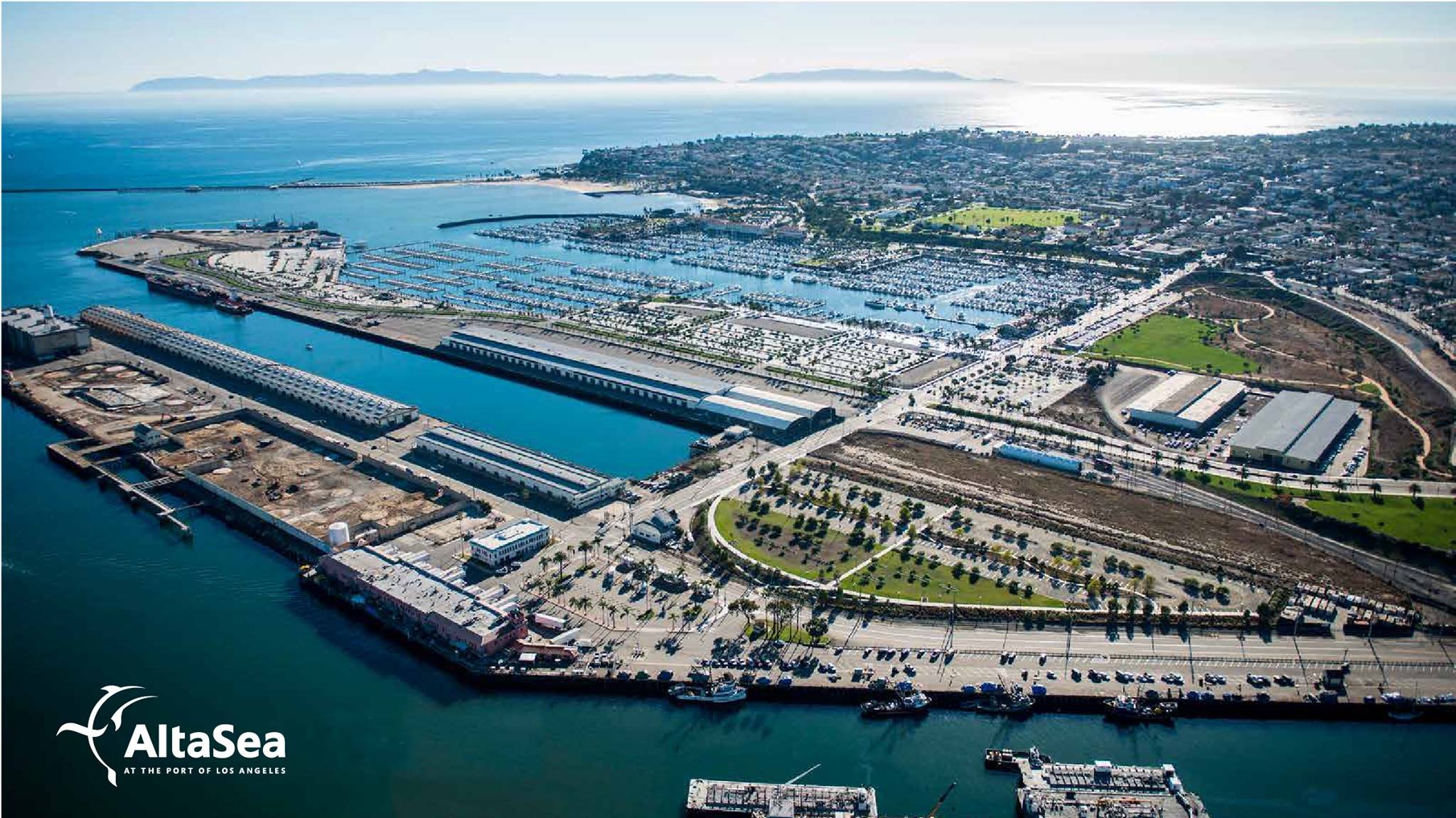
AltaSea at the Port of Los Angeles is dedicated to accelerating scientific collaboration, advancing an emerging blue economy through business innovation and job creation, and inspiring the next generation, all for a more sustainable, just and equitable world.
Dr. Greg Stone has always been a key ingredient to AltaSea since his book “The Soul of the Sea: In The Age of the Algorithm” inspired much of their mission and their progressive agenda.
Pole-to-Pole is excited to be a supporter of AltaSea and we look forward to 2022 and the unique possibilities our recently formalized MOU will bring to ocean conservation.

The Metals Company's exploration vessel, the Maersk Launcher.
Pole-to-Pole is proud to be closely aligned with The Metals Company which offers the best and most realistic solution for the world to acquire the many millions of tons of battery metal required for the green revolution.
The Metals Company's mission is building a carefully managed metal commons that will be used, recovered, and reused again and again—for millennia. No more metal taken from the planet. No more metal is lost to landfills. No more damage to the planet and the people on it. A society built with a metal metabolism, similar to how many biological systems have evolved over time.
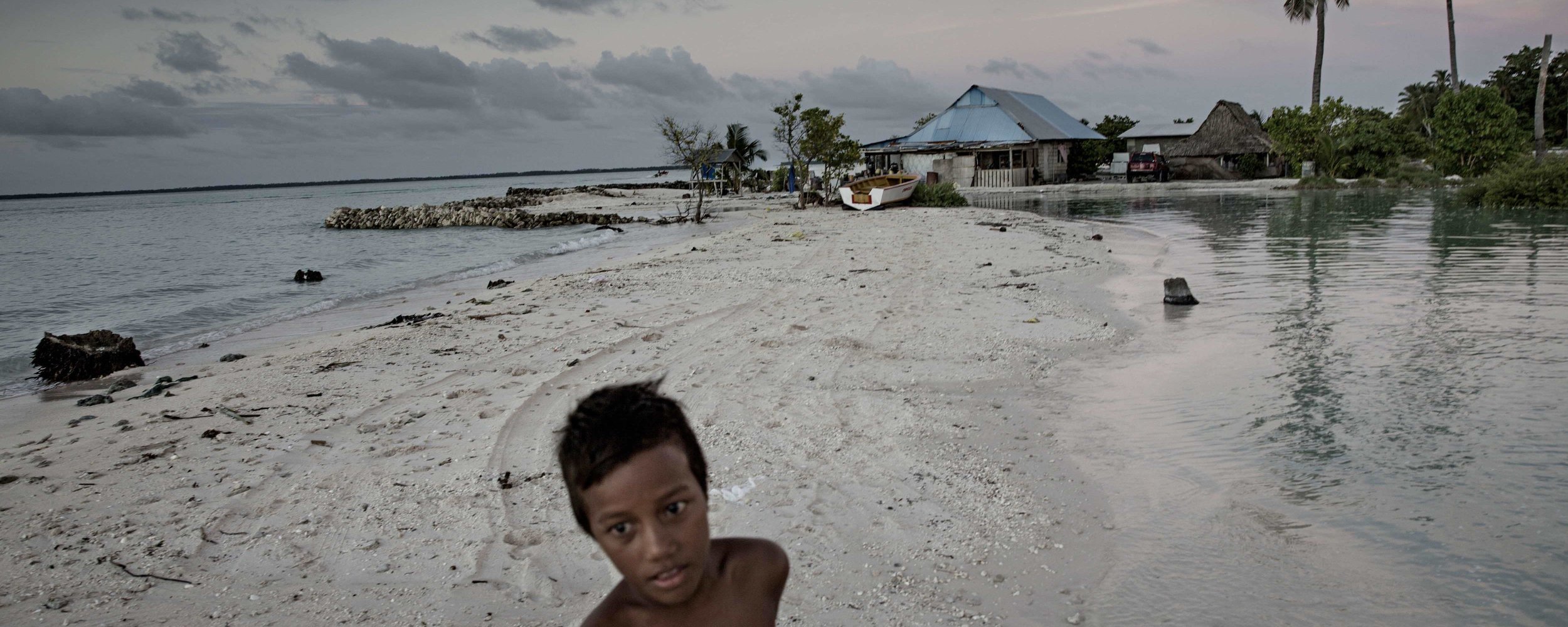

Twice in 2021, Dr. Greg Stone was invited on National Geographic expeditions to the Galapagos Islands, one of the most important upwelling and biodiversity regions. There are changes happening based on current aberrations and other climate impacts, which appear to be showing up in Galapagos. Pole-to-Pole supports National geographic and their history making our planet and its inhabitants and habitations accessible to everyday people everywhere.
The cornerstone of the program is our podcast “The Sea Has Many Voices”, hosted by the foundation’s co-founder Dr. Greg Stone. This year we had a series of prominent and passionate leaders in ocean conservation and engaged our audience with perspectives from names like Jared Diamond, Ian Somerhalder, Philippe Cousteau, Kelly Slater, and Dr. Larry Matlin, just to name a few. As Greg often has said, “Everything starts with a conversation”, and this year we are proud of the dozens of conversations ignited by such a diverse group of people involved with our mission. The viewership and subscriptions continue to grow and we look forward to another year of producing this engaging podcast.

The Girl of The Sea of Cortez
A Feature Film
P2P’s production entity, Ocean Renaissance, has optioned Peter Benchley’s novel, “The Girl of the Sea of Cortez”, with a projected 2023 release. A beguiling John Steinbeck-type fable, The Girl of The Sea of Cortez, is about humanity’s complicated relationship with the sea and was far and away Peter Benchley's best-reviewed book. It has attracted a considerable cult following since its publication (1982). "The Girl" signposted Benchley's growing interest in ecological issues and anticipated his future role as an impassioned and intelligent defender of the ocean imbalance between human activities and the marine environment.

According to the World Association of Zoos and Aquariums, “Zoos and aquariums worldwide receive more than 700-million visitors annually. This corresponds to 11% of the global human population, indicating that about one in 10 people experience human-animal interactions at zoos and aquariums each year.”
In the case of aquariums, many people have never had an opportunity to dive beneath the waves; an aquarium affords them an intimate experience with life forms of the underwater world.
!n 2022 P2P is focusing on partnering with aquariums around the planet to create exhibits and events that will bring people into the aquariums to experience and learn about sea life.
Trustees
Dr. Steven Katona
Ian Somerhalder
Dr. Gregory Stone
Christine Zinnemann
Friends of Pole-to-Pole Conservation
Wendy Benchley
Barbara Bossen
Nabuti Mwemwenikarawa
Sara and Frank Nichols
John Powell
Pete Rive
The Mary Schein Initiative
Chief of Staff
Clark Brandon
Thank You
AltaSea
Aqualink
Aquarium of the Pacific
Baum Foundation
Common Earth
Phoenix Island Protected Area Trust
Stena Shipping
The Metals Company
————————————————-
Distinguished Fellows
Dr. Porter Turnbull
Dr. Nan Hauser
Dr. Richard Sears
Music Director
Dave Sorrendino
Legal Advisor
Peter Shelley
Accountant
Niel Engleman
To support our work, please make checks out to Pole-to-Pole Conservation, and mail to:
POLE-TO-POLE CONSERVATION
17350 Sunset Blvd. Suite 502
Pacific Palisades, CA 90272. USA
info@poletopoleconservation.org
424-268-4986








